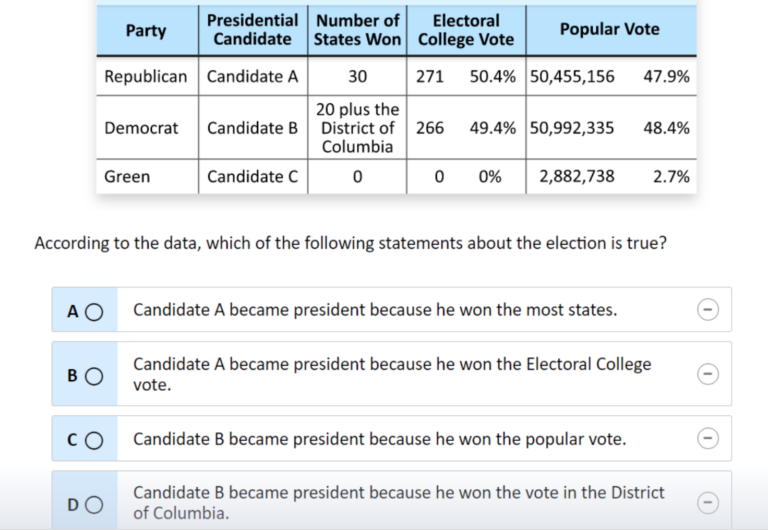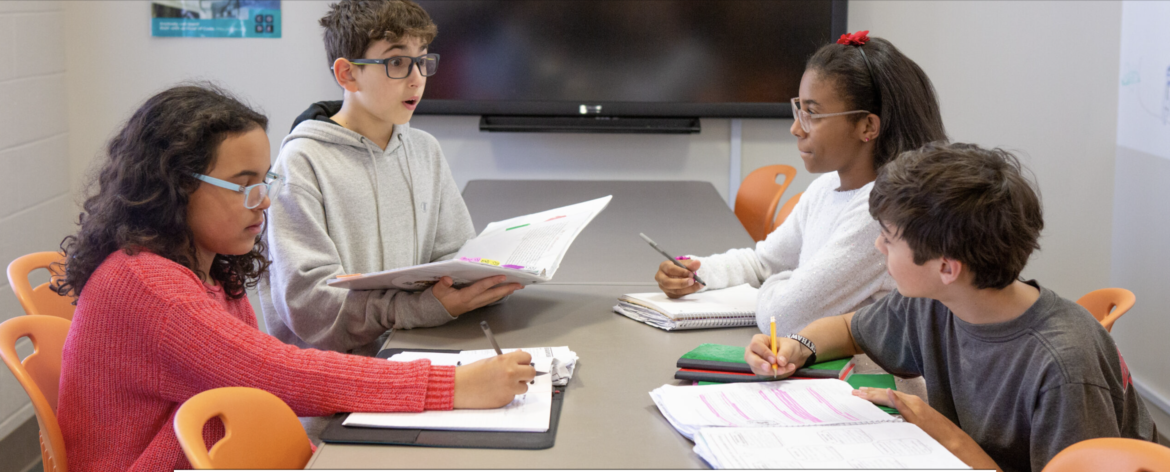Scores nationwide testing eighth graders’ understanding of U.S. history continued a decade of decline in 2022 and fell for the first time in civics, according to data released Tuesday.
Only 13% of students scored proficient in history and only 22% scored proficient in civics on the National Assessment of Educational Progress; 40% of students scored below the basic level of knowledge in U.S. history, a decline from 34% in 2018.
The implication is a large proportion of students lacking a strong foundation and understanding of the subjects are entering high schools where civics and history are facing highly politicized debates over content and instruction. Some California teachers are toning down or avoiding vigorous discussions to avoid contention.
“There are a number of schools implementing outstanding history and civics programs for youth in California and across the nation. But sadly, they are the exception and not the norm,” said Michelle Herczog, coordinator of history and social science instruction for the Los Angeles County Office of Education. “The dismal NAEP findings need to be a call to action for every American school, beginning in kindergarten, to energize the teaching of U.S. history and civics in non-partisan ways, as an educational priority.”
Said Leslie Muldoon, executive director of the National Assessment governing board, an independent body that sets policy for NAEP: “Schools at all grade levels have a core role to play in instruction around citizenship, knowledge and skills.”
The drop in results was not surprising; 2022 scores released last fall in math and reading plummeted in fourth and eighth grade nationally and, to a lesser extent, in California.
“Given what we already know about how COVID affected students’ reading and math skills, I think it’s important to emphasize the disruption caused by the pandemic,” said Martin West, the academic dean at the Harvard Graduate School of Education and a member of NAEP’s governing board.
But, he said, noting that U.S. history scores fell by a similar amount between 2014 and 2018, “I think it would be a mistake to say that this is all about the pandemic and not try to identify other factors that could be affecting students’ performance.”
While more than 100,000 students nationwide took the 2022 NAEP math and reading tests, only 7,800 eighth graders from 410 schools took the test in civics, and 8,000 eighth-graders from 410 schools took the history test — too few to provide results by state.
Based on a scale of 300 points, the average civics score of 150 in 2022 was 2 points lower than in 2018 and equal to the score in 1998, the first year for civics using the current framework. It is 28 points below the level designating proficiency.
Based on a scale of 500 points, the average eighth-grader’s U.S. history score was 258, a significant 5-point drop from 263 in 2018 and not significantly different from 259 in 1994, the first year the test was given. It is also 36 points below the level designating proficiency.
Lower scores in history especially were widespread and profound, covering all racial and ethnic groups and all student achievement groups except for the highest achievers, the top 10% of performers. Their scores in history and civics held steady, another indication of the widening gap of achievement between the lowest and highest performing students that also were prevalent in math and reading. In civics, scores of students in the lowest 10th and 25th percentiles of performance fell, while scores didn’t drop among the top quarter of students.
“The top half of students are OK by the historical measure of bad performance, but the bottom half got worse, dragging down the distribution,” said another NAEP board member, Eric Hanushek, an economist and senior fellow with the Hoover Institution at Stanford University. “This reinforces our concern about polarization in general knowledge and views of civics and history among the next generation.”
Several factors could be at play. NEAP assessments, West said, “are always much better at telling us what’s happening with students than why.”
Low scores could point to weak comprehension skills. “Schools must focus on literacy from the earliest grades and sustain reading and background knowledge through middle school and beyond,” said Muldoon.
In 2022, there was a small drop in the proportion of eighth grade students who took a course primarily focused on U.S. history compared with four years earlier. Those students scored 12 points higher than students who took a course with only some U.S. history and 14 points higher than students who didn’t take a U.S. history course.
“We also know that there have been various pressures on schools that have unfortunately led elementary schools in particular to spend more instructional time on reading and math, less on science and social studies,” West said. Instead, schools should recognize that “building students’ background knowledge in areas like history and civics is crucial for their development as readers.”
“Especially in elementary school, instructional time on different subjects is not a zero-sum game,” he said.
Los Angeles Unified Superintendent Alberto Carvahlo, who also services on the NAEP board, agreed.
“I think there’s been a preponderance of emphasis on literacy and numeracy at the expense of other areas such as civics, such as technology. So I don’t think it’s surprising that we are looking at pretty dismal data,” he said.
What the tests measure
The U.S. history assessment measures eighth graders’ knowledge of four themes: change and continuity in American democracy; interactions of peoples, cultures and ideas; economic and technological changes and their impacts on society; and the changing role of America in the world.
The civics assessment measures knowledge about government and civil society; participatory skills essential for informed, effective and responsible citizenship; and civic dispositions that contribute to the individual effectiveness and the common good.

The assessment presents both multiple-choice and open-ended questions requiring written responses.
On the 2022 civics assessment, one question required knowledge of the Electoral College, with four options; 45% of students chose the right answer. A constructed response asked students to create rules to solve a lunchtime problem in which students hanging out in hallways were disrupting students still in classrooms; 69% of students gave a complete response explaining how their solutions would work for students and teachers.
On the 2022 U.S. history assessment, 84% of students picked correctly on a multiple-choice question asking about working conditions in a 19th-century factory. But only 6% got the full credit, needed for a proficient score, asking what two ideas from the Constitution or Declaration of Independence that Martin Luther King might have referred to in a less-known passage from his 1963 “I Have a Dream” speech.
Hanushek acknowledged that scoring proficient on NAEP U.S history reflects a high standard, requiring a deeper understanding of knowledge, while scoring basic does not – equivalent to naming the functions of the Legislature. Scoring below basic means you cannot talk about U.S. government functions, and “that should be a concern.”
